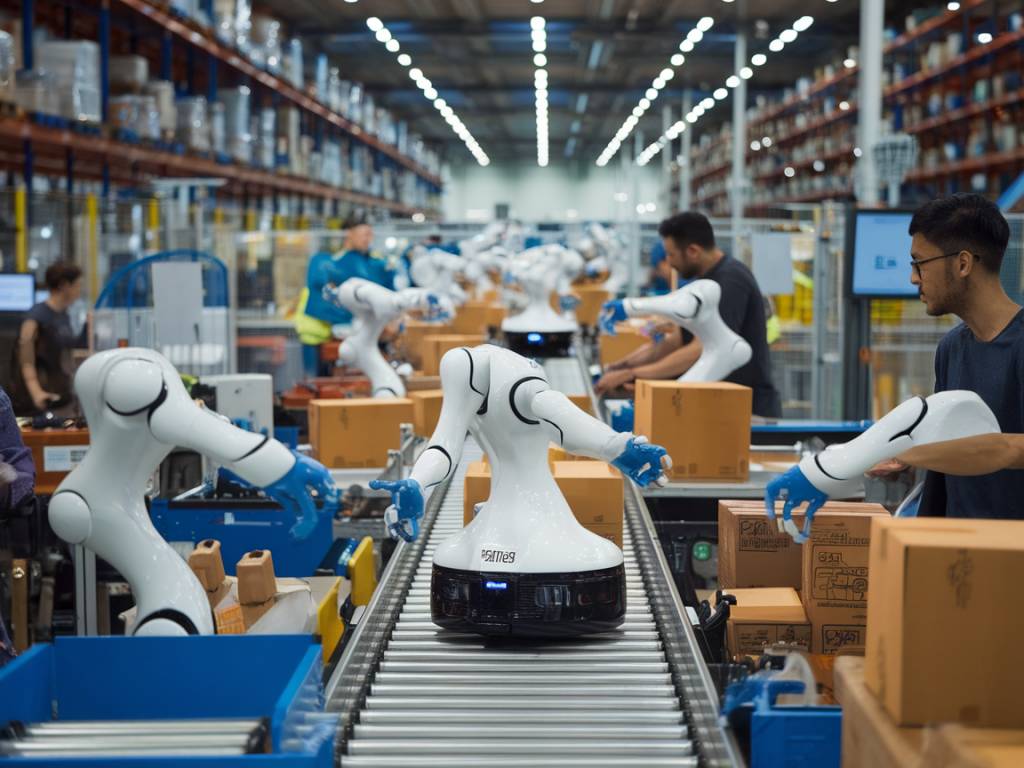The logistics sector is undergoing a seismic shift, thanks to advances in technology. A significant development driving this change is the increasing use of warehouse robots. These automated systems are transforming how warehouses operate, providing a glimpse into the future of logistics. For businesses, the promise of enhanced efficiency, cost savings, and scalability makes exploring the utilization of warehouse robots not just appealing but necessary.
The Rise of Warehouse Robots
The adoption of robots in warehouses is not a new phenomenon but has accelerated in recent years. With e-commerce companies booming and consumer expectations rising, the logistic industry faces pressures unlike ever before. To keep up, businesses are increasingly turning to robotics to streamline their operations and enhance their capabilities.
These robots handle tasks that range from sorting and picking to packaging and transportation within the warehouse. By automating these tasks, businesses can increase throughput and reduce the margin of human error, which ultimately leads to better service delivery and customer satisfaction.
Improving Efficiency through Automation
Warehouse robots excel in environments where repetitive tasks need to be performed with precision. They are designed to operate tirelessly over extended periods, reducing the time required to complete tasks when compared to human workers. Moreover, with sophisticated sensors and algorithms, these robots can navigate complex environments, significantly improving operational efficiency.
Additionally, employing robots for menial tasks allows human workers to focus on more complex responsibilities, such as strategic planning and execution. This division of labor can expedite processes, reduce operational costs, and enhance the overall productivity of the workforce, proving that human-robot collaboration in warehouses is an essential aspect of modern logistics.
Cost Reduction and Scalability
The initial investment in warehouse robots might seem hefty, but the long-term benefits are worth considering. By reducing reliance on human labor for repetitive tasks, companies can slash costs associated with wages, human error, and inefficiencies. The scalability offered by robotic systems allows businesses to seamlessly adapt to varying demand levels, thus optimizing their operations year-round.
As companies grow and their logistics demands expand, warehouse robots make scaling up operations more feasible. Automated systems can be easily integrated into existing workflows to expand capacity without necessitating excessive downtime or resource allocation.
Improving Accuracy and Safety
Errors in warehouse operations can lead to costly repercussions. Robots are equipped with precision technology, which minimizes such errors, ensuring that processes are efficient and timely. This reduction in error rates translates to higher customer satisfaction and protects the business's bottom line.
Moreover, safety is a critical concern in warehouses, where heavy machinery and goods handling pose potential risks. Warehouse robots reduce the likelihood of accidents by automating physically demanding and hazardous tasks, creating a safer work environment for human employees. This safety enhancement reduces liability and enhances worker satisfaction and retention.
Integrating AI and IoT
The integration of Artificial Intelligence (AI) and the Internet of Things (IoT) with warehouse robots takes efficiency to an entirely new level. AI enables robots to learn from data, optimizing their performance over time. Meanwhile, IoT connectivity allows these robots to communicate and collaborate with other devices and systems within the warehouse ecosystem.
By harnessing AI and IoT, warehouse robots can make real-time decisions, autonomously adjusting to changes in the environment or operations. This dynamic adaptability is invaluable in an industry where time-sensitive decision-making is crucial. AI-driven robots provide agility in operations that are increasingly necessary in today's fast-paced world.
Challenges and Opportunities
Despite the evident benefits, the shift towards automation is not without challenges. Workforce displacement is a significant concern, as robots take over jobs traditionally held by human workers. Companies must approach automation with a strategy to upskill existing employees, ensuring that their workforce remains relevant and valued.
Moreover, technology integration within existing systems can pose technical challenges, requiring thorough planning and execution to avoid operational disruptions. Nevertheless, for companies capable of navigating these challenges, the benefits far outweigh the initial hurdles. Solutions, such as the warehouse robot systems, present immense opportunities for innovation and growth.
The flexibility, precision, and scalability of warehouse robots position them as pivotal players in the future of logistics. Organizations that can successfully integrate these technologies stand to gain a competitive edge in the fiercely competitive logistics landscape.
Future Prospects
As we look forward, the role of warehouse robots will become increasingly integral to the logistics sector. Innovations in robotics technology continue to push the envelope, promising even greater efficiency, cost savings, and capabilities for businesses willing to embrace automation.
Additionally, advances in AI and machine learning promise to enhance the intelligent capabilities of these robots, enabling them to make more nuanced decisions and work more collaboratively with human colleagues. A future where robots and humans coexist and complement each other's strengths is not only possible but inevitable.
As industries continue to evolve, early adopters of warehouse automation will likely reap significant rewards, positioning themselves as leaders in a new era of logistics efficiency. The transformative power of warehouse robots is undeniable, making them an essential component of any forward-thinking logistics strategy.
The path to automation is fraught with challenges but filled with promise. Warehouse robots are at the forefront of this journey, providing a compelling vision of what logistics can achieve when enabled by cutting-edge technology.




